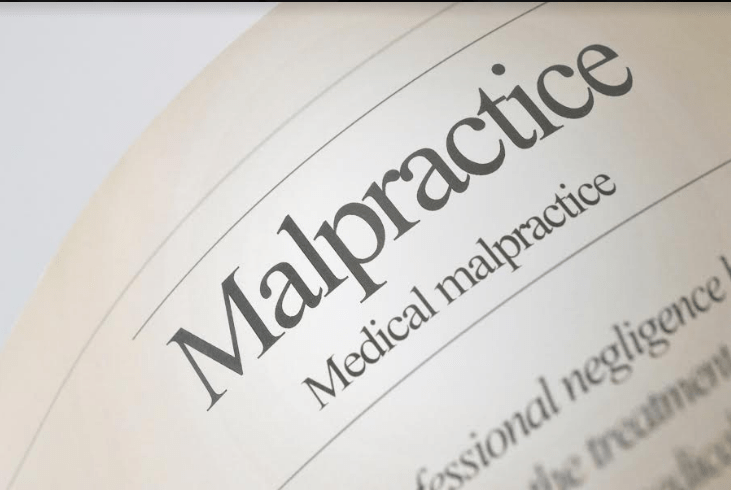More than 250,000 people die each year due to medical malpractice. This places medical errors among the top three leading causes of death in the United States—with heart disease and cancer taking the first and second positions.
Doctors are hardworking, but even if they are competent at what they do, medical malpractice or error can arise if a doctor becomes negligent. There are various types of medical malpractice to watch out for when visiting a health facility during your next appointment. Read on to learn about them.
Failure to Diagnose or Misdiagnosis
Misdiagnosis is when a physician gives the wrong diagnosis to a patient. However, a misdiagnosis on its own is not enough ground for a medical malpractice lawsuit. To have a clear case, the patient must have suffered from an injury due to the misdiagnosis.
For the misdiagnosis case to go on, the injury must be proven to have occurred from the substandard care of the physician alone. There have to be objective records and facts to prove that the injury is a result of negligence. Various lawsuits have surfaced from misdiagnosing staph infections, asthma, strokes, and heart attacks.
A misdiagnosis can occur because a patient has symptoms that overlap with those of another disease. Also, visiting a doctor who does not order the proper diagnostic test could make you receive an incorrect diagnosis. Tumors, blood clots, heart disease, and infections are commonly misdiagnosed conditions.
Misdiagnosis cases can arise when a physician does the following:
- Neglects the medical history of a patient
- Fails to recognize a patient’s symptoms
- Fails to carry out the correct lab tests
Errors with a diagnosis are usually discovered later when the patient fails to respond to the treatment or seeks a second option.
Delayed Diagnosis
A delayed diagnosis is a form of medical negligence that occurs if another doctor would have diagnosed the condition on time. Delayed diagnosis could lead to an undue injury if the injury or disease is given time to progress instead of being treated.
A doctor might fail to diagnose if they have a workload that finishes their capacity to administer medical treatment well. During such cases, the hospital is held responsible for any damages. Be sure to hire a malpractice lawyer if you are a victim of delayed diagnosis.
Infections Acquired in Hospitals
Nosocomial infections are infections that a patient acquires from a medical facility or a hospital. For an infection to qualify as nosocomial, it must not have any attachment to why the patient is seeking treatment.
The most common nosocomial infections are as follows:
- Primary bloodstream infections
- Infections in a surgical room
- Gastrointestinal infections
- Pneumonia
- Urinary tract infections
Injury at Childbirth
A birth injury occurs due to human error where the mother or infant is harmed because of medical negligence. The negligence could be present during labor, or prenatal or postnatal care.
But birth injuries are different from congenital disabilities. Birth defects arise due to genetics, exposure to a harmful substance during pregnancy, or the DNA of the infant.
Birth injuries could be in the form of wrongful conception. Wrongful conception is where one conceives in the absence of preventive measures like sterilization.
Wrongful birth is also a form of birth injury. In this case, the physician fails to inform the parents of the risks associated with giving birth to an infant with genetic abnormalities.
Injury to a mother in the form of failure to control bleeding or failing to detect and diagnose preeclampsia is also medical malpractice. Failing to monitor the infant’s oxygen before and after the delivery is also a form of birth injury.
Anesthesia Errors
Anesthesia is critical since it provides comfort when carrying out intrusive medical procedures. But without anesthesia, there are risks associated with errors that can lead to death. Errors related to anesthesia occur daily and lead to death in some cases.
Administering too little or too much anesthesia is wrong. Likewise, administering the wrong type of anesthesia or using defective medical equipment when administering anesthesia is medical malpractice.
Before administering anesthesia to any patient, doctors should determine whether the patient is allergic to anesthesia. The physician should place the breathing tube well and monitor the vital signs of the patient during anesthesia.
After determining whether the patient is allergic, the physician should give proper instructions to the patient regarding anesthesia. The doctor should not forget instructions like telling the patient not to eat or drink before the procedure.
Medication Errors
Cases dealing with medication issues also make up medical malpractice. This is shown when a physician fails to factor in how the drugs a patient is currently using will interact with the newly prescribed medications. Medication errors also occur at the pharmacy.
Prescription errors are part of medical errors. Such errors are signified by filling in the wrong drug or incorrect dosage amounts, leading to death or an overdose. Filling in the wrong prescription is not uncommon because some medicines have similar names, and one could confuse the other.
Medication errors could also occur if the drug does not meet safety standards and is defective. This leaves manufacturers with medical liability.
Surgical Errors
Surgical errors are among the types of medical malpractice. They might occur before or after the surgery and can have devastating effects on the patient. Some of these effects could be medical complications, infections, or death.
The most common reason why surgical errors occur is poor planning prior to the operation.
The actions of the surgeon could lead to surgical errors. If a surgeon is operating under the influence of drugs or alcohol, it could lead to surgical errors. Operating the wrong part of the body or carrying out the improper operation is a surgical error.
Surgeons should ensure they make an incision on the proper location of the body, and once done, they should not leave a foreign object in the body of the patient. A standard surgical error is operating on the wrong patient.
Some of the surgical errors that can occur after the operation are as follows:
- Neglecting the postoperative procedures
- Not providing the patient with proper instructions for postoperative recovery
- Administering incorrect dosages or medications
Emergency Room Malpractice
Occasionally, medical malpractice takes place in the emergency room. In emergency rooms, doctors act under pressure. A doctor has to make decisions on the spot, and at times these could result in negative consequences.
There may be a lack of time and a shortage of staff. The emergency room might have too many patients and very few doctors to attend to them, hence the confusion.
During an emergency, doctors have limited time, so they might not review the patient’s history. The medical staff may administer drugs or carry out procedures that could lead to severe health complications unless there is a family member present with the patient’s medical history.
Lack of proper training and unsanitary conditions could also lead to emergency room malpractice. Since many patients go in and out of the emergency room successively, it becomes hard to thoroughly sanitize the equipment before the arrival of the next patient.
Failure to State Known Risks
The doctor has a duty to inform the patient of the risks involved in course of treatment. This is known as the duty of informed consent.
If a patient decides not to go through a procedure, but the doctor goes ahead and performs it on them anyway, malpractice may occur if injuries result from the procedure.
Cancer Misdiagnosis
The consequences of misdiagnosis of a severe disease like cancer can be fatal. If the cancer symptoms in a patient are detected and treated during the early stages, the patient will have a higher chance of survival. Understanding the signs of Prostate cancer early can significantly improve treatment outcomes and enhance survival rates.
But, if the doctor does not diagnose the patient as soon as the symptoms show up, the symptoms will progress to a stage where no medication will be effective.
Bedsores
Bedsores are also known as pressure ulcers. They form when a patient is left in the same position for a period. Bedsores are a sign of inadequate care and neglect and are more common in nursing homes and hospitals.
If bedsores go untreated, they will become infected and will lead to a more severe health issue.
Know the Different Types of Medical Malpractice
There are different types of medical malpractice. Even if medical negligence can occur in different ways, the bottom line remains that the medical professional has deviated from the required level of care. Any deviation from the accepted care standards is medical negligence, and if it causes undue injury, the doctor or hospital will be held liable.
If you enjoyed reading this article, kindly check out more of our other engaging articles.















